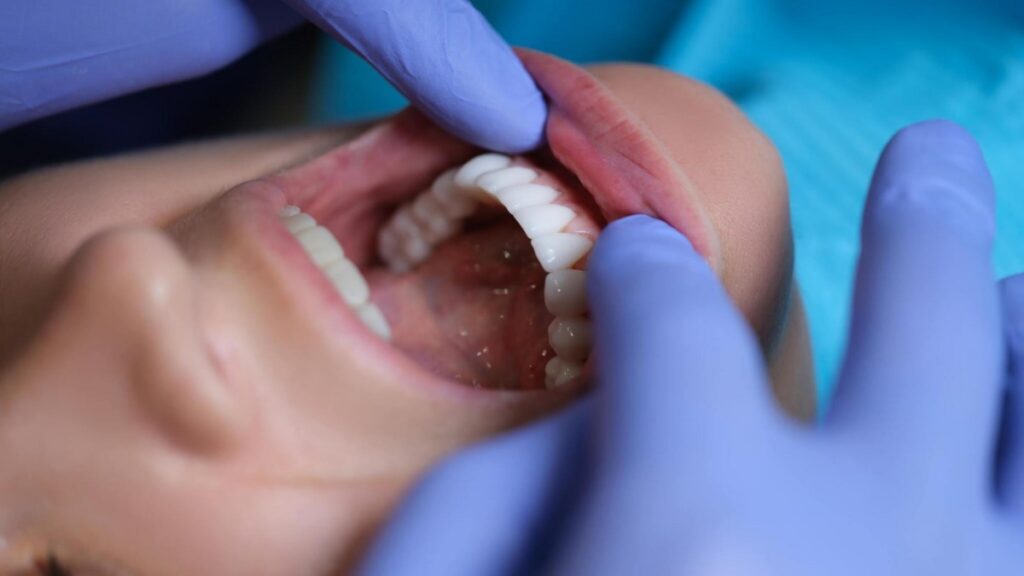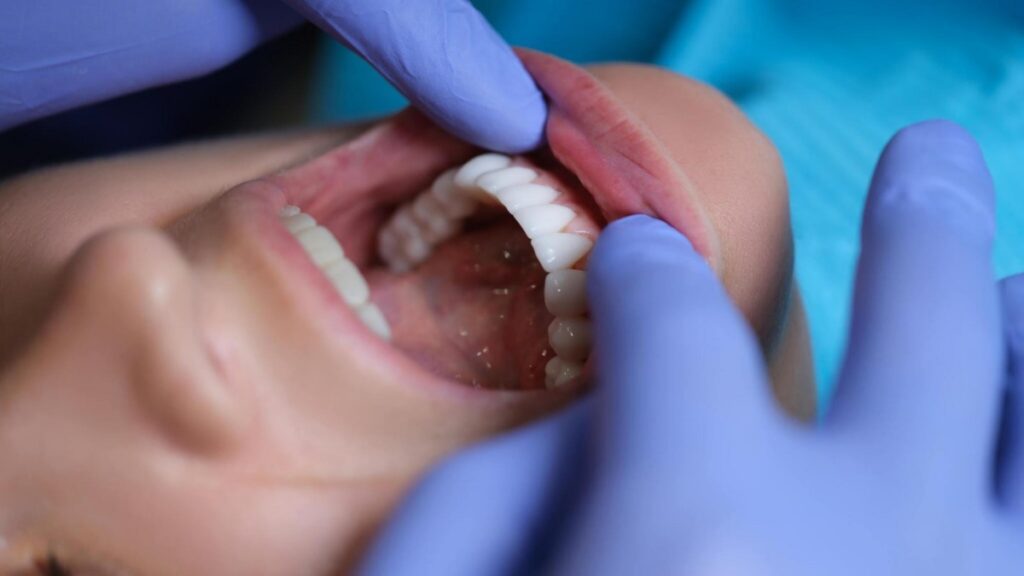Does insurance cover veneers? If you’re considering dental veneers to enhance your smile but are unsure about insurance coverage, it’s important to understand that most plans classify veneers as cosmetic and exclude routine payment. While veneers can dramatically improve smiles by reshaping, modifying, or rebuilding front teeth with porcelain or composite bonded to existing teeth, don’t assume your insurance will reduce the costs of these popular smile makeovers. We’ll explain typical dental insurance limitations on veneer coverage, out-of-pocket price ranges to expect, ways to potentially lower your expenses, and more affordable smile-boosting alternatives.
Although veneer coverage is very limited, researching provider prices and financing options can make a more beautiful smile achievable even with minimal insurance assistance. The key is going in with realistic expectations about your plan’s cosmetic dentistry benefits.

What Are Veneers and Why Get Them?
Cosmetic Upgrade for Your Smile
Does insurance cover veneers? Veneers are thin covers placed on top of existing teeth to fix various cosmetic dental issues. They hide chips/cracks, lengthen teeth, brighten stains, straighten mild crookedness, or close gaps trapping food. Two main types are porcelain veneers offering glass-like transparency and durability, and composite resin veneers with a more natural luster. Veneers also differ in full vs partial coverage – some cover all upper/lower teeth for uniformity while others focus on the 6-10 visible upper teeth. Because they require enamel removal, veneers make dramatic, irreversible smile transformations. But check your insurance, as most don’t cover these cosmetic procedures.
Average Costs Without Insurance
Due to the intensive tooth work required, veneers do not come cheap, usually ranging from $925 to $2,500 per porcelain tooth. Composite veneers cost a little less at $250 to $1,500 per tooth but have more differences in durability and shade consistency over time. Hence, getting veneers for all top and bottom rows often exceeds $25,000 for porcelain and $10,000 for composite resin materials. Though, concentrating only on upper front teeth or a few isolated teeth averages around $5,000 in total. Some but not all dentist fees include initial exams, teeth impressions, temporaries, lab work, anesthesia, placements, and follow-up visits. Knowing exactly what is included before committing to veneer work is essential.
Dental Insurance Coverage of Veneers
Typically Considered Cosmetic by Insurance Carriers
The great majority consensus is that dental insurance companies sort veneers to improve smiles under cosmetic rather than restorative treatments. This means they see veneers as optional enhancements rather than medically necessary for the maintenance of good oral health. Much like nose jobs or breast implants would not reasonably be covered by health insurance, adding decorative facings over healthy teeth is viewed as purely aesthetic by insurance carriers. Without trauma injuries, decayed teeth, or pronounced bite issues needing reconstruction, veneers likely fall outside standard dental policy coverage.
In fact, standard employer-sponsored or privately purchased dental plans contain language like “excluded services” that identify types of work not covered or strictly limited in benefits. Improving tooth look or shape through veneers commonly shows up as exclusions. Additionally, insurers place low annual maximums on cosmetic services, for example limiting them to no more than $1,000 per year. With single veneers running around $1000 each or more and full sets exceeding $10,000, those small allowances won’t make a large reduction.
Out-of-Pocket Spending Should Be Expected
Outside injury trauma like getting teeth knocked out or fractured where veneers could reconstruct form and function, the vast majority of veneer candidates take on significant out-of-pocket costs with little if any insurance help. That said, exceptions do exist if your particular dental issues match up to certain technical reasons insurance companies list for veneer coverage. For example, if large intrinsic staining due to medical conditions like tetracycline use is proven or alternating bite alignment meaning specific teeth excessively stick out when chewing, you may qualify for higher coverage. Insurance judgments for veneers depend heavily on submitted evidence of clinical need versus strictly aesthetics.
Appealing insurers’ rejections requires highlighting unique functional teeth fixes versus beauty arguments. Partnering with your dentist to gather detailed paperwork and focusing on veneers in your unique case to restore the ability to properly bite or chew more than enhance look increases the chances of expanded coverage through aggressive appeals.
Managing Veneer Costs
Dental Savings Plans
Joining discounted dental savings plans represents the most helpful way of reducing major bills for pricey cosmetic veneers without meaningful insurance coverage. These programs give participants access to large networks of dental providers who reduce costs of treatments and services by typically 25 to 60% for patients without traditional insurance. Usually with modest annual membership fees under $200, these plans specifically promote percentage savings on popular bigger ticket items like dental veneers and crowns among taking part dentists and orthodontists. Reputable plans often include valuable extras like free exams, x-rays, cleanings, and teeth whitening services adding further value. Using these dental savings plans brings steep veneer sticker prices more according to average patient budgets.
Dental Schools and Dental Tourism
A less convenient but much more affordable option lies in pursuing discounted veneer installation choices from dental students overseen by qualified dentists at accredited teaching colleges or universities. Offering significantly lower rates while delivering generally high-quality outcomes, these academic dental settings allow students to gain practical experience while providing budget-conscious patients complex treatments like veneers at a fraction of standard costs. Appointment availability and overall time frames may pose difficulties with this option, however.
Alternately, dental tourism represents another money-saving tactic where patients travel overseas for budget veneer placements in locations like Mexico, Costa Rica, or Thailand. While upfront airfare and lodging costs factor in, having five teeth veneered outside the U.S. often becomes cheaper than a single local tooth despite travel expenses. However, this path involves added research and risk review of practitioner credentials, facility certification, and follow-up care considerations worth examining closely.

Alternatives to Dental Veneers
Teeth Whitening
While not making the extreme structural changes possible with porcelain or composite veneers, professional teeth whitening or over-the-counter bleaching strips offer more affordable ways to substantially brighten teeth six to eight shades for an improved look. In-office procedures under the dentist’s direction can achieve faster, more dramatic results but usually range from $600 to $1000 per treatment. More economical options from drugstores costing under $50 derived from gels in moldable plastic trays reliably lighten moderately stained teeth gradually when used consistently for a couple of weeks with touch-ups every few months. For mild to moderate discoloration issues mainly, diligent bleaching provides a cost-effective first option before pursuing potentially much more expensive dental veneer options.
Dental Bonding
Does insurance cover veneers? Dental bonding presents a more affordable alternative to veneers for minor dental flaws. The composite resin materials used in bonding cost $300-600 per tooth, require less drilling than veneers, and can be completed quicker in one visit. While bonding doesn’t last as long or allow for major reconstruction like veneers, it can conceal small cracks, gaps, chips, or textures through artistic shaping. For those seeking minor improvements on a budget, dental bonding offers a cost-effective, minimally invasive option compared to pricier, custom veneers.
Does Insurance Cover Veneers? Our Final Thoughts
While increasingly popular for delivering spectacular smile makeovers, permanent dental veneers still come with high price tags rarely covered substantially by dental insurance lacking attention to fine print exclusions. But for committed candidates with cosmetic dentistry budgets, smart navigation of provider options and creative cost-cutting through dental savings plans or training clinics can transform sticker shock into reasonable outlays. For moderate improvements, temporary solutions like bleaching strips or minimally invasive bonding merit consideration first before pursuing extensive, irreparable veneer work.
Ultimately by grasping what insurance does and doesn’t cover around elective veneers along with making personalized financial plans, achieving an affordable smile upgrade becomes very possible. Remember to thoroughly go over the best options matching personal dental needs, cosmetic priorities, and budget with trusted dentists first when figuring out your best path to a rejuvenated smile through new veneers or alternative choices.
Disclaimers: The information is for general purposes only and not financial advice. While the $925-$2,500 range is a good starting point for Dental Veneers, the costs can vary significantly based on location, dentist expertise, and material quality.
Do Dental Insurance plans typically cover any part of the costs for veneers?
Most dental insurance categorizes veneers as a cosmetic procedure and does not provide coverage. Exceptions may apply if veneers are medically necessary due to trauma, pronounced misalignment causing bite issues, or moderate to severe intrinsic discoloration from medical conditions. Even then, benefits are quite limited, with low annual maximums of around $1,000. Expect to pay most veneer costs out-of-pocket.
What are the main alternatives to dental veneers for improving smile appearance?
Popular lower-cost alternatives include professional or over-the-counter teeth whitening treatments to brighten moderate staining by several shades for under $50 to $1000 per procedure. These require occasional touch-ups. Dental bonding applies molded tooth-color resins over flaws for seamless uniformity across front teeth at around $300-$600 per tooth. While bonding doesn’t last as long or make dramatic changes possible with custom veneers, it causes less alteration to original teeth at a fraction of the price.
How much do dental veneers usually cost per tooth?
Each porcelain veneer ranges from $925 to $2,500 or more depending on the dentist. Composite resin veneers cost slightly less at $250 to $1,500 per tooth but have some differences in longevity and shade consistency over many years. A full set of veneers for top and bottom teeth can exceed $25,000 in total. Just doing front upper teeth averages around $5,000 overall.
Does getting veneers involve irreversible tooth preparation?
Yes, veneers require some removal of the original outer enamel to allow sufficient reduction for the thin custom facings to be bonded flush on top. This permanence means patients should think carefully before committing to veneers if concerned about lifespan or want to limit the unalterable tooth structure removal required. Discuss all options thoroughly with your dentist first.
Can I find more affordable veneers at dental schools or overseas?
Dental colleges can provide discounted veneer installation with students under faculty guidance at significantly lower rates. Appointment flexibility becomes limited, however. Or “dental tourism” options exist traveling abroad to countries like Mexico, Costa Rica, or Thailand for budget veneers including airfare/lodging for overall savings. Carefully vet practitioner credentials and facility certification first when pursuing these money-saving options.

